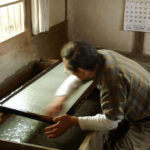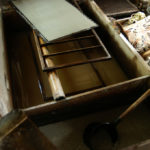Science for Silence: The Quest for a Quiet Cabin
Share

APEX Insight: Beyond targeting loud jet engines, interior cabin noise can be negated through the use of materials with sound-absorbing properties.
Although airplane cabin noise does no long-term harm to your hearing, you probably feel as though it does short-term harm to your mental state. It’s not just your imagination: A study has shown that aircraft noise can impair a passenger’s cognition as much as being drunk.
Defeating ambient noise is a complicated problem. The loudness comes from the wind, the aircraft’s vibrations and the background noise of the cabin itself. While the big-picture trend has been towards quieter aircraft thanks to better engine and body design, the passenger experience is still one of low, sustained roars.
However, as Mr. McGuire told Ben Braddock in The Graduate, “There’s a great future in plastics. Think about it.” So let’s look at a few different approaches to solving the cabin-noise conundrum.
Paper, Planes
Sekisui SPI showed off its Infused Imaging technology at the 2015 Aircraft Interiors Expo in Hamburg, telling Runway Girl Network contributing editor John Walton that its new way of molding elements of an aircraft’s interior surfaces means that everything from seat design to branding elements will become bespoke. Aside from being softer to the touch, this material is quite good at deadening ambient noise. Sekisui president and COO, Ronn Cort, told Walton that its new material was inspired by Washi, a type of Japanese handmade paper that is both translucent and moldable when wet.
Making Washi: Photo by Hideyuki KAMON via Flickr
Honeycomb 2.0
A commercial jet must be light enough to fly with all of its passengers and their stuff, so sound insulation has been one of the tradeoffs. The honeycombed structure of a plane’s insulating layer is awesome at being light and rigid, but less awesome at being soundproof. Publishing in Applied Physics Letters, a team of very clever people out of North Carolina State University has built a better honeycomb. Their new latex-based metamaterial adds just a tiny bit of weight to the plane’s body, but also deadens ambient noise by 20 decibels.
A metamaterial, for those of us who want to sound smart at cocktail parties, is a material which, through its structure rather than through its chemical makeup, exhibits properties not found in nature.
Wrap It Up
3M Aerospace is attacking the noise the problem by going with what it knows best: tape. 3M Aerospace developed a vibration-dampening tape for use in a plane’s fuselage; when you dampen vibration, you dampen noise.
Meanwhile, the evocatively-named SMAC Barrier is a thin membrane installed around a plane’s cabin windows, designed by France’s SMAC Aero to reduce sound transmission.
Then again, there’s yet another option: noise-canceling headphones. That way, should you wish to negatively impact your cognition, you can just order a few drinks.
Read “The Consequence of Quiet” in The Entertainment Issue to learn more about noise in the aircraft cabin.








